May 28, 2025 | 20:01 GMT +7
May 28, 2025 | 20:01 GMT +7
Hotline: 0913.378.918
May 28, 2025 | 20:01 GMT +7
Hotline: 0913.378.918
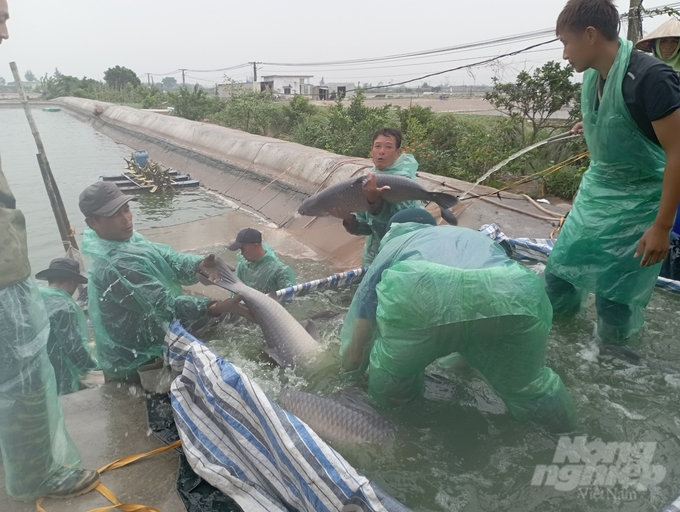
Harvesting black carp at Bach Long Sedge Farm (Bach Long commune, Giao Thuy district, Nam Dinh province). Photo: Kien Trung.
Established in 1971 during the period of agricultural cooperatives flourishing in the northern region, Bach Long Sedge Farm (Nam Dinh province) specialized in sedge cultivation. For a long time, the sedge farm supplied raw materials to sedge weaving villages in Nam Dinh and Thai Binh provinces.
However, due to market mechanism changes, the traditional sedge weaving industry has been declining, no longer yielding economic benefits. Bach Long Sedge Farm shifted its focus to freshwater aquaculture by converting sedge cultivation areas into ponds and reservoirs for freshwater fish farming.
Mr.Nguyen Hong Khanh, Director of Bach Long Sedge Farm, stated that since transitioning from sedge cultivation to freshwater fish farming, cooperative members have enjoyed a higher standard of living and greater economic efficiency compared to sedge cultivation.
Currently, Bach Long has about 170 households managing 142 hectares of large-scale fish ponds, providing over 2,000 tons of marketable fish each year.
"We have identified aquaculture as the primary production sector of our unit. The current area used for aquaculture is 129.2 hectares out of 142.6 hectares of agricultural land, including 27.6 hectares for marine aquaculture and 101.6 hectares for freshwater aquaculture. Every year, the sedge farm conducts technical training classes on white-leg shrimp farming in freshwater areas without using antibiotics, which has resulted in high economic efficiency. Each hectare of shrimp farming increases economic efficiency by 50-60 million VND," said Mr. Khanh.
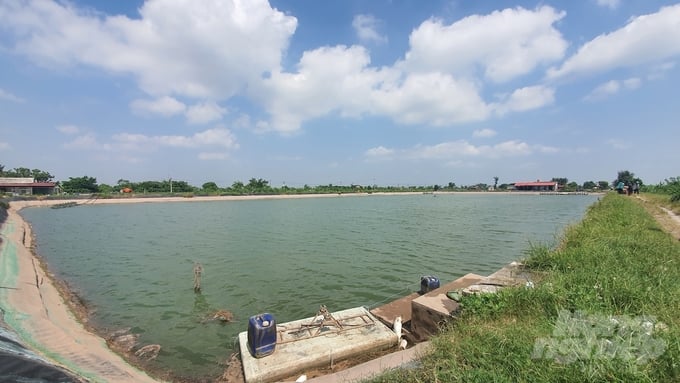
A black carp farming pond was invested in and built methodically in Bach Long commune. Photo: Kien Trung.
Through the practical transition from low-yield sedge cultivation to raising various aquatic species (shrimp, crab, carp, black carp, grass carp) as well as livestock farming (cattle, chickens, etc.), black carp is the main aquaculture product, with revenues reaching 400-450 million VND per hectare per year. Aquaculture farmers earn between 150-200 million VND per hectare.
"When transitioning from sedge to fish farming, the sedge farm has created favorable conditions for aquaculture households to develop. These households must comply with regulations, including not discharging wastewater into irrigation canals, maintaining safety by reinforcing the dikes along the brackish water region, and notifying the team leader two days in advance when they need fresh water from the salty area. These households also construct shrimp ponds with a 5-meter buffer zone, refrain from independently building dikes across secondary and tertiary rivers, and are prohibited from releasing unprocessed wastewater into the common production area," Mr. Khanh explained.
For many years, Bach Long has been becoming the largest supplier of black carp in Northern Vietnam. Each year, thousands of tons of black carp are provided from this place. Local households are transitioning towards commodity production, applying scientific and technical methods for large-scale freshwater fish farming.
Recently, Mr. Vu Van Thien household harvested from a 7,000 square meter pond stocked with black carp (weighing 7 kg each) after nearly 2 years of farming. The total area of ponds under Mr. Thien's stewardship is 1.4 hectares. The current price for black carp is around 70,000 VND per kilogram. The carp have reached sizes of 7 kg and above, with every additional 200 grams increasing the price by 1,000 VND.
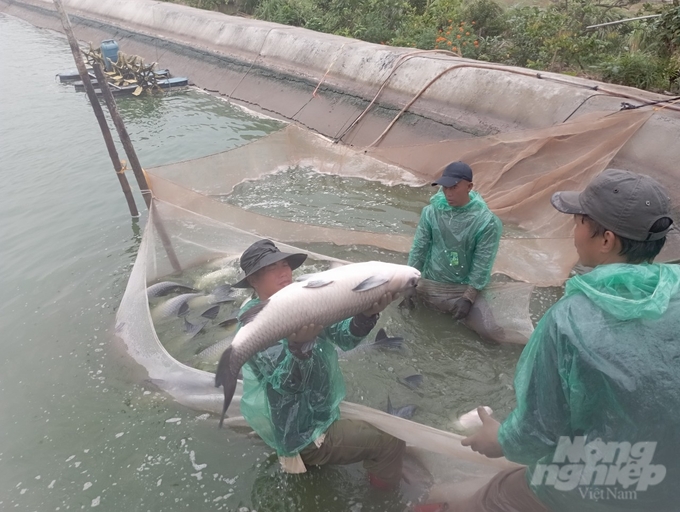
Harvesting black carp at the pond of Mr. Vu Van Thien household. Photo: Kien Trung.
"Bach Long supplies marketable black carp to the entire Northern region. The grown-up fish ponds are purchased for service businesses, providing high-weight fish or supplying fish to restaurants for consumers. Due to the staggered stocking of ponds, there are households harvesting fish every week and every day, ensuring a continuous and uninterrupted fish supply," Mr. Thien elaborated.
Since 2010, various models of freshwater aquaculture have emerged in the sedge farm, subsequently flourishing and developing on a large scale. Since the fish pond land contracts expired on December 31, 2020, Bach Long is preparing a report for the Provincial People's Committee and relevant departments to request approval to continue signing contracts with households, requiring them to maintain the current land use status and continue organizing production, preventing land from falling into disuse.
"According to the plan, Bach Long Sedge Farm is accelerating the equitization process to stabilize production for its workers. We are awaiting guidance from the Provincial People's Committee to proceed with the model transformation, focusing on freshwater aquaculture, especially using black carp as the primary breeding species," shared Mr. Nguyen Hong Khanh, Director of Bach Long sedge Farm.
Translated by Linh Linh
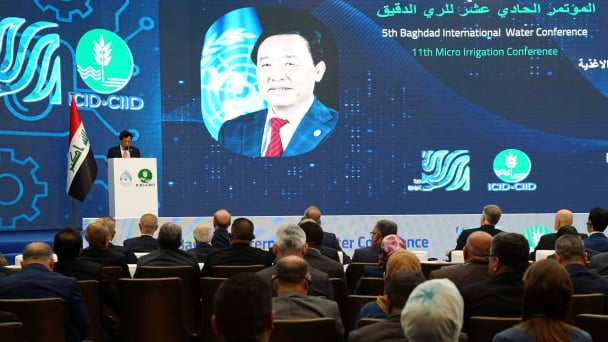
(VAN) FAO’s Director-General addresses the 5th Baghdad International Water Conference.
/2025/05/26/1716-4-nongnghiep-191706.jpg)
(VAN) Chain linkages, technological innovation, and raw material zoning are three strategic pillars for the coconut industry to strongly develop and elevate its position on the global agricultural map.
![Advanced mariculture – an inevitable trend: [4] Accompanied by scientists](https://t.ex-cdn.com/nongnghiepmoitruong.vn/608w/files/sohk/2025/05/13/1941-pgsts-vo-van-nha-140958_717.jpg)
(VAN) According to Assoc. Prof. Dr. Vo Van Nha, Director of the RIA III, the development of advanced offshore mariculture is no longer an option but an essential path for Vietnam’s fisheries sector.
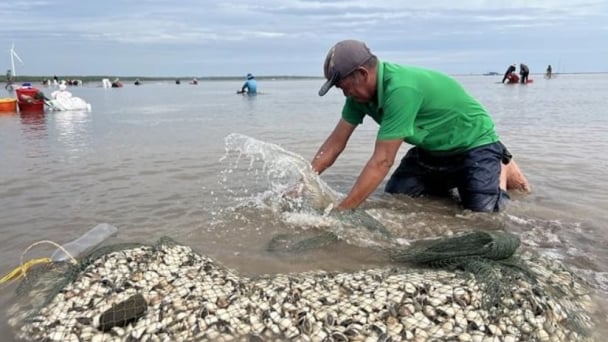
(VAN) Vietnam is intensifying the development of mollusk farming areas that meet international standards, aiming for sustainable growth and enhancing its export position in the global seafood market.
![Advanced mariculture – an inevitable trend: [3] Policy-driven momentum](https://t.ex-cdn.com/nongnghiepmoitruong.vn/608w/files/doanhtq/2025/05/21/0104-0616-0348-nuoi-bien-170339_789.jpg)
(VAN) To ensure the success of offshore mariculture that uses advanced technologies, it is essential to establish supportive policies that inspire both individuals and enterprises to invest with confidence.
![Advanced mariculture – an inevitable trend: [2] Outstanding results](https://t.ex-cdn.com/nongnghiepmoitruong.vn/608w/files/sohk/2025/05/12/4632-4136-nuoi-bien-11-164117_819.jpg)
(VAN) Pilot models of high-tech offshore mariculture in Vietnam, particularly in the South Central Coast region, have demonstrated exceptional economic returns and sustainability, setting a new direction for the country’s aquaculture industry.
![Advanced mariculture – an inevitable trend: [1] Moving offshore](https://t.ex-cdn.com/nongnghiepmoitruong.vn/608w/files/phucpm/2025/05/18/0252-2436-nuoi-bien-6-162148_783.jpg)
(VAN) Mariculture using advanced technology and moving offshore is an inevitable trend, as nearshore areas increasingly reveal limitations.